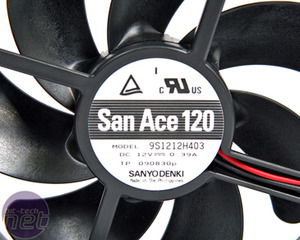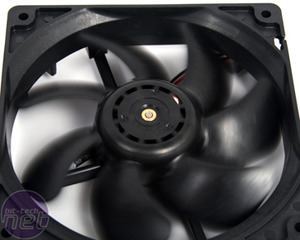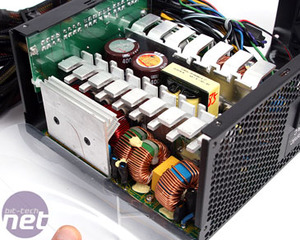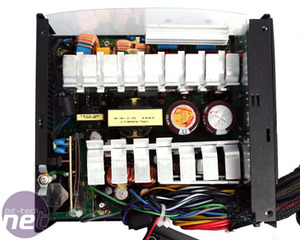
What's Inside?
For those who have been overclocking long enough to remember the Swiftech MC462-A, you'll probably have dropped one on top of your 1GHz T-Bird AXIA/AVIA and cranked that chip up to 1.33GHz (133MHz FSB) or 1.4GHz if you were lucky.The point is, this excellent cooler came with a Sanyo Denki fan and it was fantastic (but it also jacked the price a good £10). Usually you could only buy YSTech, Sunon, Delta (if you were legally deaf) or other random Chinese/Taiwanese brands but once you used a Sanyo Denki you would realise it had another level of quality only Panaflo could closely match.
The axle and bearing are extremely high quality, the fan is extremely well balanced so it doesn't vibrate and these two factors together means it spins freely for notably longer than cheap fans. The actual build quality (plastic used) is notably better than any other fan you'll buy too, which is why we're making such a fuss here because, as the only moving part in a PSU, the fan is usually the first thing to go wrong.
Hanging upside down in a case it puts more stress on the axle, especially if the speed varies up and down or it gets clogged with dust to unbalance the blades - this is also why the Antec Signature 850W and PC Power and Cooling units still use rear mounted 80mm fans.
As such, Seasonic's insistence on a Sanyo Denki here is an excellent choice - and it'll be yet another feature we see becoming a key selling point of other brands in the future too. The 9S1212H403 is a dual ball bearing 12cm fan (the "S" stands for silent, not sleeve bearing) that yields the same excellent quality as ever and we certainly expect it to see out the five years of Seasonic's warranty.
Inside, Seasonic has a pretty regular design with two large sets of aluminium heatsinks dominating the view. These sit directly under the fan but don't particularly direct the airflow towards the rear of the case; instead, they're simply angled with a flat edge facing the airflow to increase contact. In fact, on the one side the air has no direct escape - it's blocked in both ends by a covering on the power socket and the modular PCB/cables.
The quality of components used is, as we'd expect, very good - there are 105'C KMR (Nippon Chemicon) Japanese electrolytic capacitors used everywhere, bar the three solid aluminium capped ones used on the DC-DC converter PCB shown below. Again, Seasonic stretches the truth about using solid aluminium capacitors in its marketing material, but at least it's an improvement from just the one used in the 500W S12II.
This PCB is nestled underneath one of the large heatsinks, by the cable bundle and downsteps the main 12V output into both 3.3V and 5V.

MSI MPG Velox 100R Chassis Review
October 14 2021 | 15:04












Want to comment? Please log in.